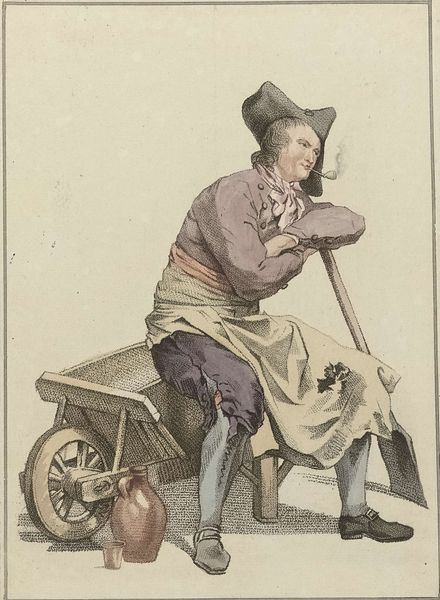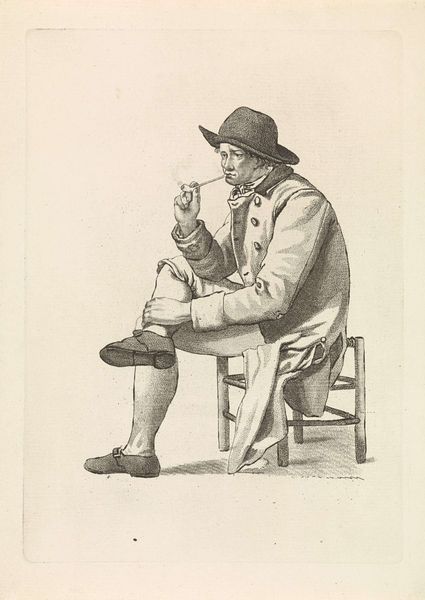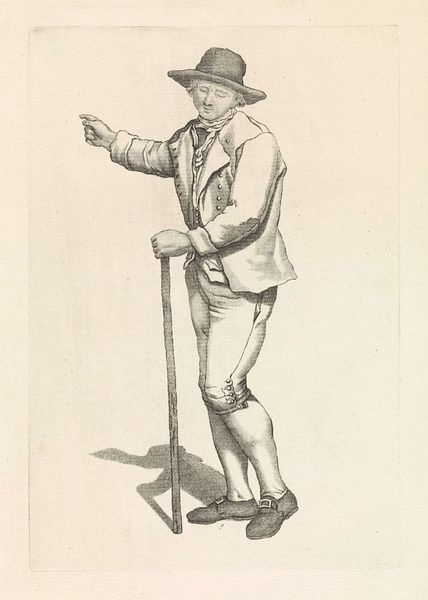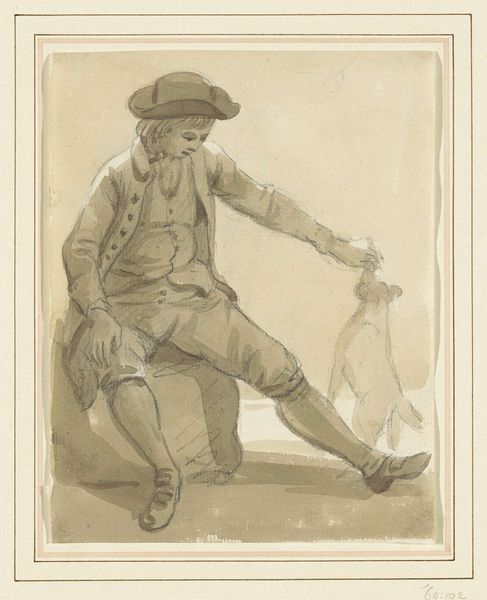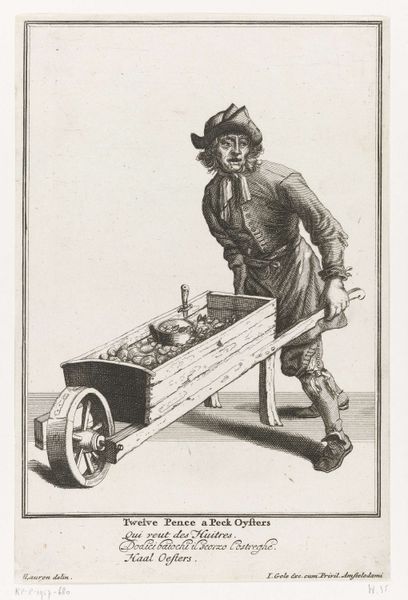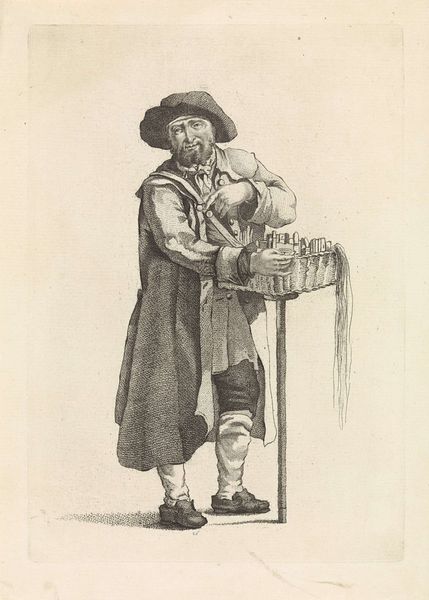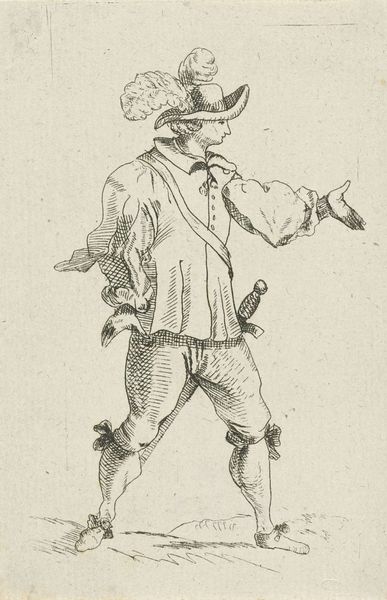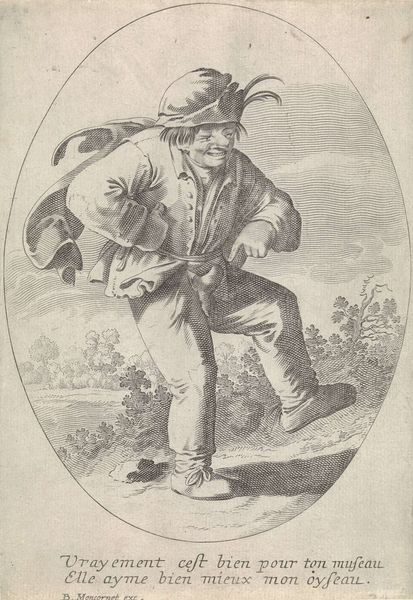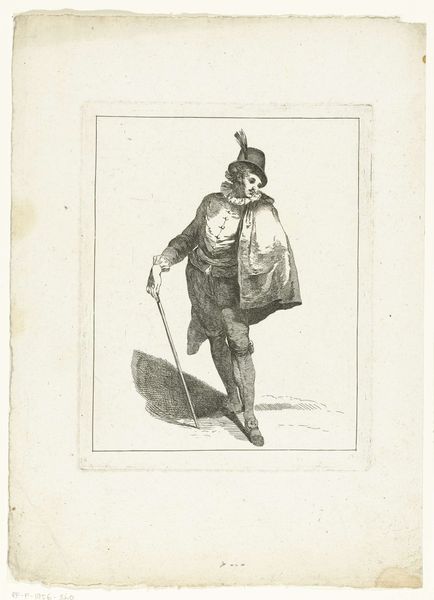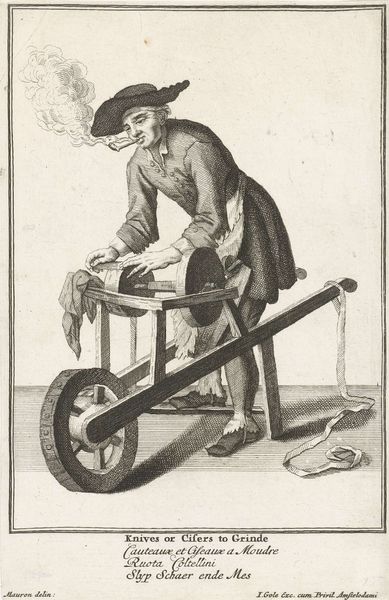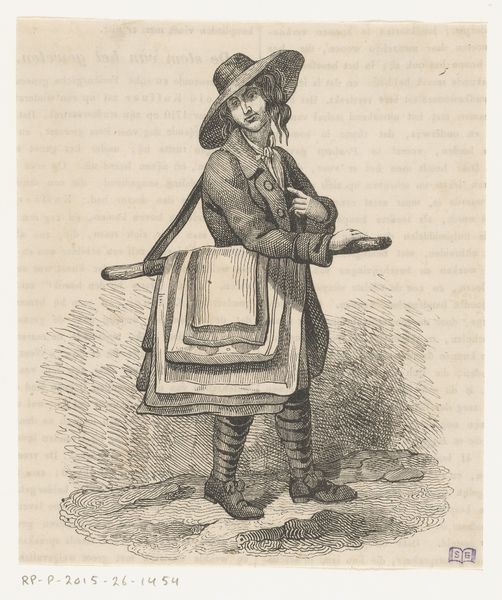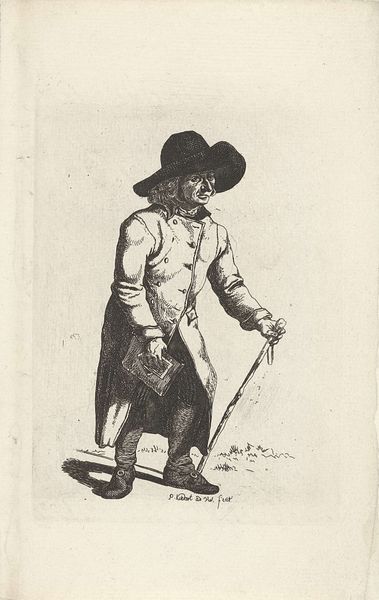
print, engraving
#
portrait
# print
#
figuration
#
portrait drawing
#
genre-painting
#
engraving
#
realism
Dimensions: height 208 mm, width 158 mm
Copyright: Rijks Museum: Open Domain
Editor: So, here we have "Man sitting on the edge of a wheelbarrow" by Mathias de Sallieth. It's an engraving, probably from the late 18th or early 19th century. It’s interesting; the figure looks kind of worn down, but also oddly dignified. How do you interpret this work? Curator: I see a powerful commentary on labor and social class. The man's posture – the way he's slumped on the wheelbarrow, his clothing, and even the inclusion of the pipe – speak volumes about his position in society. Consider the context: who were the working class during this period, and what was their lived experience? Editor: Right, so it's not just a simple portrait of a worker. Curator: Precisely. De Sallieth likely aimed to do more than just represent the man. This could be a statement about the social order. Note the detail of the jug and cup. Were they meant to humanize or mock the character, or reveal a level of material life? Editor: That’s a great point. I hadn't considered the details of the setting so closely. So, how does his portrayal relate to broader artistic trends of the time? Curator: The rise of realism and genre painting reflected a growing interest in everyday life, but artists like De Sallieth could also use these genres to subtly critique social inequalities. Think about how this image might have been viewed by different audiences, particularly those who occupied very different positions within society. Editor: I guess, looking at it now, I can see that it could be a very radical statement for its time. It forces you to confront questions of labor and social injustice. Curator: Exactly! And that confrontation, that disruption of the status quo through art, remains powerfully relevant today. Editor: Thanks, this has given me so much more to consider. It's made me realize how important context is when looking at a seemingly simple image. Curator: And how art can serve as a critical lens to understand the power dynamics that shape our world.
Comments
No comments
Be the first to comment and join the conversation on the ultimate creative platform.
